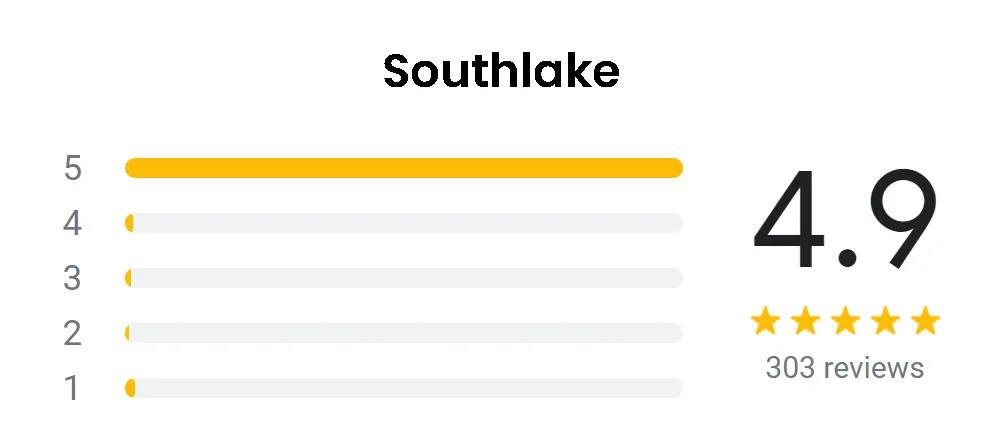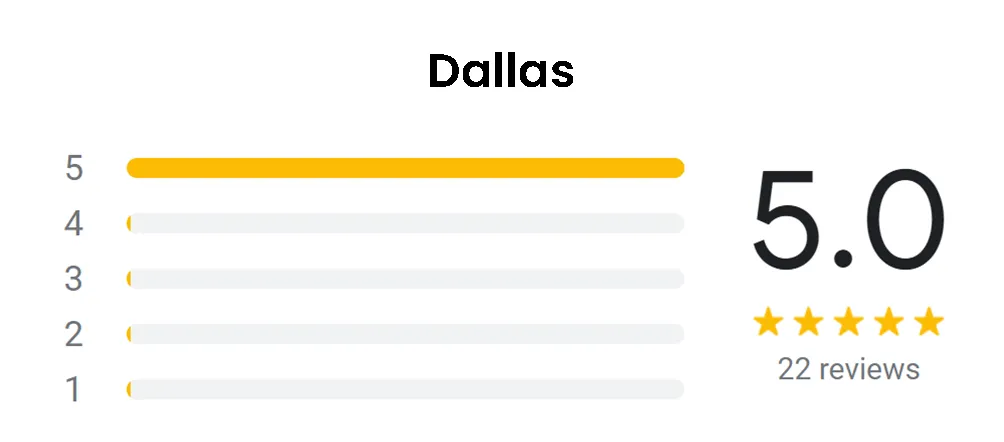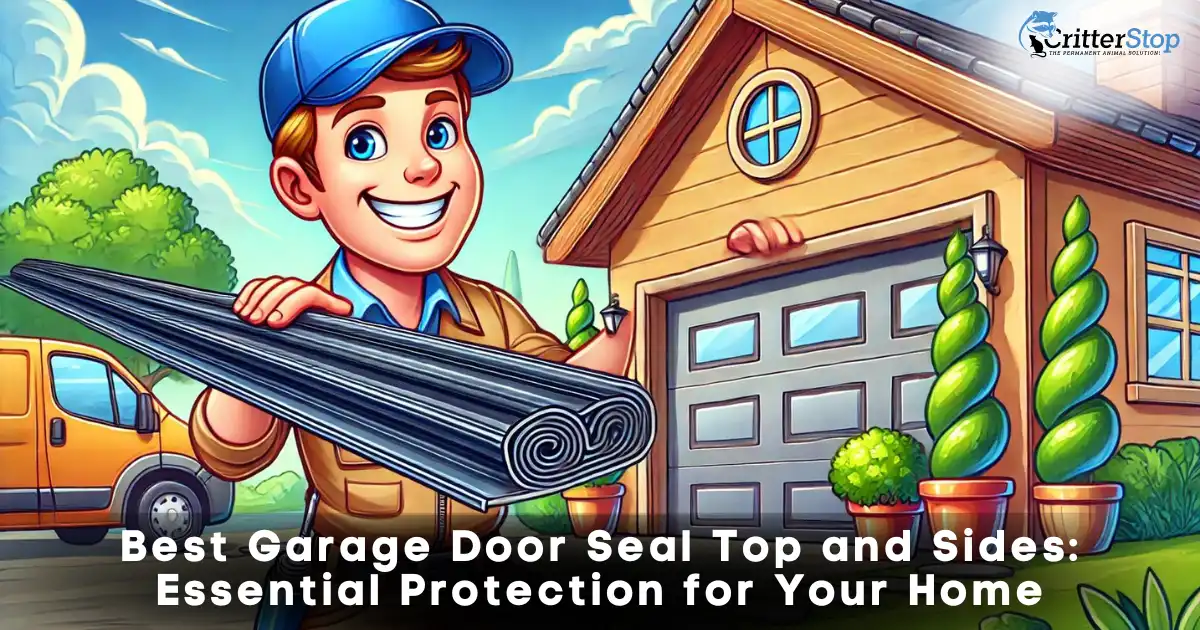
Garage door seals are very important for keeping your garage safe from the weather and pests. If you install the top and side seals correctly, they can make your garage space much more energy efficient and keep drafts, moisture, and debris out. Keep reading to find out which could be the best garage door seal top and sides.
The best garage door seals for tops and sides are typically made from durable materials like EPDM rubber or vinyl, which offer excellent weatherproofing and longevity. These seals come in different sizes and shapes to fit different garage door configurations. They make sure that the door fits tightly so that it works well.
Choosing the right seal for your garage door can help maintain a cleaner, more comfortable environment inside your garage while also reducing energy costs. This article will talk about the best garage door seals on the market, what they do, and how to install them so that you can make an informed choice for your home.
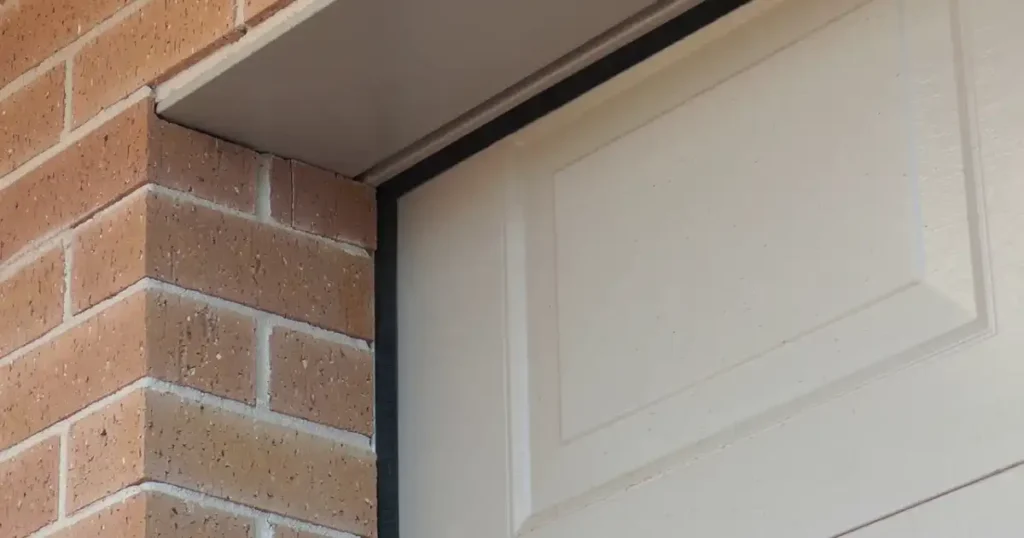
Garage door seals play a crucial role in protecting and insulating your garage. These essential components come in various types designed to fit different garage door configurations.
Garage door seals create a barrier against external elements. They keep bugs, water, and other unwanted things from getting into the garage.
Seals also improve energy efficiency by reducing air leakage. This helps keep the temperature inside the garage more stable, which could lower the cost of heating and cooling.
Additionally, garage door seals reduce noise transmission. They create a buffer between the garage interior and outside sounds, making the space more comfortable.
Top seals attach to the garage door's upper edge. They compress against the door frame when closed, creating a tight seal.
Side seals run vertically along the door edges. These flexible strips fill gaps between the door and frame, blocking drafts and moisture.
Bottom seals, or threshold seals, attach to the garage floor. They create a weathertight barrier when the door is fully closed.
Brush seals use bristles to block debris and small pests. These are often used in commercial settings or areas with high wind exposure.
V-shaped seals offer superior protection against water intrusion. Their unique design channels water away from the garage opening.
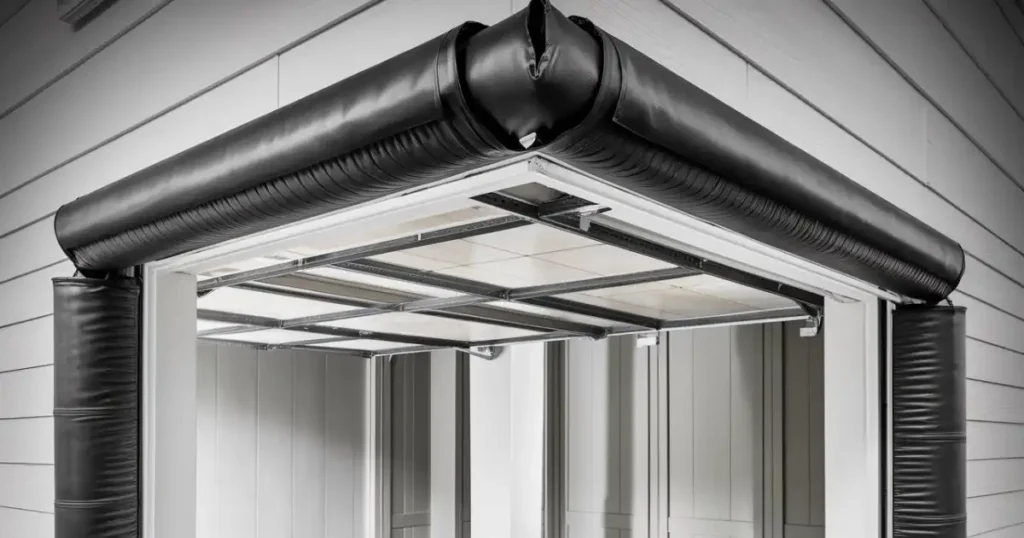
Garage door threshold seals protect against water, debris, and pests while improving insulation. The best seals offer durability and easy installation for maximum effectiveness.
Garage door threshold seals are often made of vinyl or rubber. Vinyl seals provide flexibility and weather resistance, making them suitable for various climates. Rubber seals offer excellent durability and can withstand heavy vehicle traffic.
EPDM rubber is a top choice for its resistance to UV rays, ozone, and extreme temperatures. This substance stays flexible in cold weather and doesn't crack over time.
Aluminum threshold seals with rubber gaskets combine strength and sealing ability. These are ideal for high-traffic garages or commercial settings.
Proper installation is crucial for threshold seal effectiveness. Most seals require adhesive for secure attachment to the garage floor.
Measuring accurately is essential. Seals should span the entire width of the garage door opening, with a slight overhang on each side.
Surface preparation is key. Before installation, the garage floor needs to be clean, dry, and free of any junk. Some seals may require a primer for better adhesion.
Many threshold seals come with pre-applied adhesive strips for easier installation. Others may need separate adhesive application.
Professional installation can ensure proper fit and sealing, especially for complex garage door configurations or uneven floors.
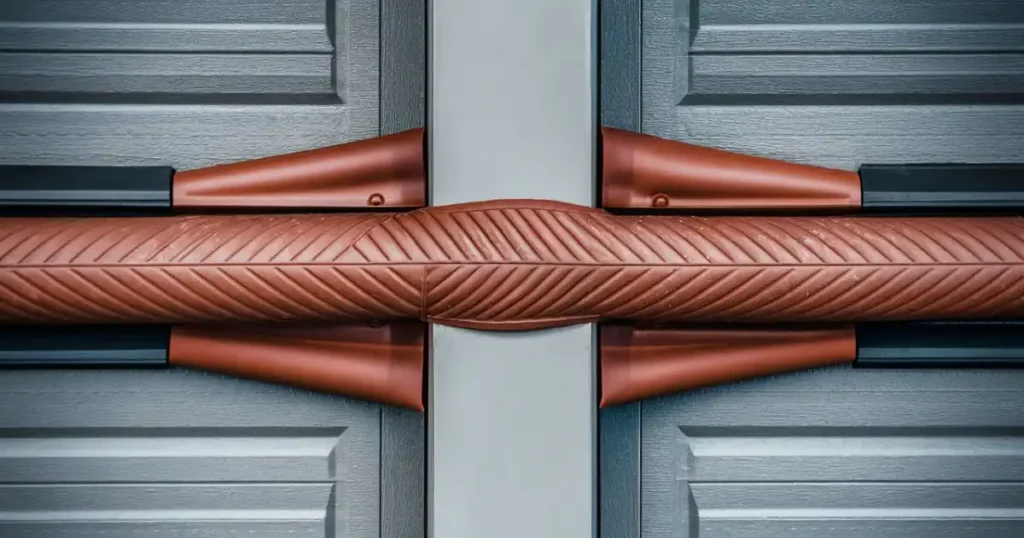
Picking the right garage door bottom seal is important to keep drafts, bugs, and water out of your garage. If you want the best seal, you need to look at your door type and floor condition.
There is great protection from T-style seals that fit into tracks on the bottom of the door. They're durable and easy to replace. U-shaped seals wrap around the door's bottom edge, offering a tight seal against the floor. These work well for doors with slight gaps.
Brush seals are made up of bristles that can adjust to different surfaces. It's best to use them in garages with rough floors. Vinyl seals can be used on many types of doors because they are flexible and don't get damaged by the weather.
For heavy-duty protection, consider double-lip seals. These feature two sealing edges for enhanced insulation and moisture resistance.
Garage door seals don't work well on uneven concrete floors. Threshold seals are an option because they make a flat surface for the door to close against. You can attach these seals to the floor and use them with bottom seals.
For minor floor irregularities, vinyl seals with extra flexibility can adapt to slight variations. Brush seals excel at bridging gaps on uneven surfaces, making them a top choice for garages with concrete imperfections.
Some manufacturers offer specialized seals designed specifically for uneven floors. These products often feature multi-layered designs or adjustable components to ensure a tight seal across varying surface levels.
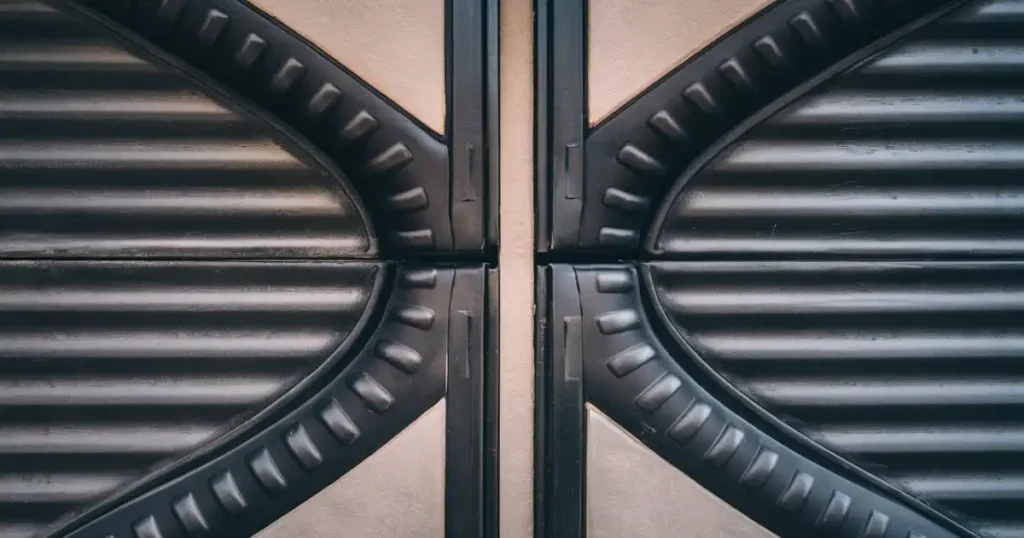
Effective sealing at the top of garage door seal prevents air leaks, moisture intrusion, and pest entry. The best protection and energy efficiency come from using the right materials and installing them correctly.
Top seals for garage doors come in various designs to suit different door types. Brush seals feature durable nylon bristles that conform to uneven surfaces, making them ideal for rough or textured door tops. Rubber seals offer excellent compression and weather resistance, creating a tight barrier against the elements.
For optimal performance, homeowners should choose seals that match their door's specific dimensions and shape. T-style seals slide into existing tracks, while nail-on strips provide a custom fit for doors without built-in channels.
Regular inspection and maintenance of top seals ensure continued effectiveness. Replacing worn or damaged seals promptly prevents costly energy loss and potential water damage.
Most garage door top seals are made of strong materials that last a long time, like silicone, PVC, or EPDM rubber. These materials withstand extreme temperatures, UV exposure, and repeated compression without cracking or losing elasticity.
EPDM rubber offers excellent weather resistance and flexibility, making it a popular choice for top seals. PVC seals provide good durability at a lower cost but may become brittle in extreme cold. Silicone seals work great in places with high temperatures and are very resistant to UV and ozone radiation.
Effectiveness of top seals depends on proper installation and material quality. High-quality seals create an airtight barrier, reducing energy costs and preventing drafts. In addition, they keep dust, dirt, and small bugs out, keeping the garage clean and safe.
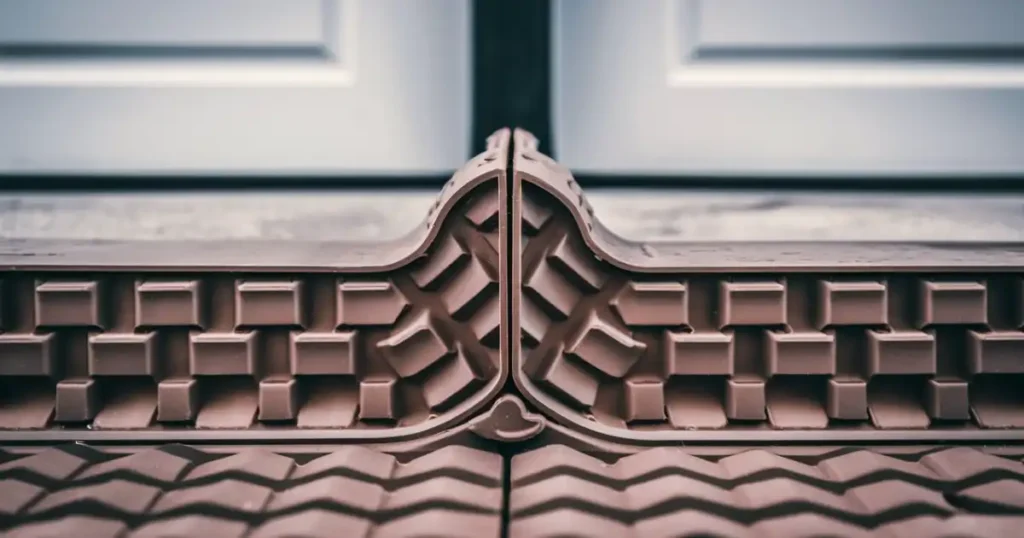
Garage door side seals play a crucial role in insulation and energy efficiency. They prevent drafts, keep out pests, and help maintain a consistent temperature in your garage.
Accurate measurements are essential for selecting the right side seals. If you want to know how tall your garage door is, measure from the ground to the top of the door frame. Take measurements at multiple points along the sides to account for any variations.
Most side seals come in standard lengths that can be trimmed to fit. Choose a seal slightly longer than your measurements to ensure full coverage. Rubber and vinyl are common materials for side seals, offering durability and flexibility.
When installing, ensure the seal makes firm contact with the door edge without impeding its movement. Some seals have adjustable tracks for a customized fit.
High-quality side seals significantly improve a garage's energy efficiency. They block out outside air tightly, so less heat is lost in the winter and less cool air is let out in the summer.
This insulation effect can lower energy bills by minimizing the workload on heating and cooling systems. In attached garages, this benefit extends to the entire home.
Side seals also block dust, debris, and moisture from entering the garage. This protection helps maintain a cleaner environment and reduces potential damage to stored items.
Many homeowners report a noticeable difference in garage comfort after installing effective side seals. The best garage door side seals combine durable materials with precise installation for optimal performance.
Uneven surfaces pose challenges for garage door seals. Proper sealing requires addressing irregularities in concrete floors and maintaining seal integrity over time.
Best garage door seal for uneven floor come in various designs. Threshold seals can bridge gaps up to 2 inches, effectively blocking drafts and pests. These seals attach to the garage floor, creating a smooth surface for the door to rest against.
Adjustable seals offer another solution. These feature flexible materials that conform to floor irregularities. Some models use brush-style seals that adapt to minor bumps and dips.
For severe unevenness, custom-cut rubber seals provide a tailored fit. Installers measure the specific contours of the floor and cut the seal accordingly. This ensures a tight seal along the entire door bottom.
Regular inspection is crucial for seal performance. Check for signs of wear, cracking, or hardening every six months. To keep working, replace damaged seals right away.
Clean seals regularly with mild soap and water. This removes dirt and debris that can compromise sealing ability. Do not use harsh chemicals on the seal because they could break it down.
Put silicone grease on the parts of the seal that move. This cuts down on friction and makes the seal last longer. Make sure to wipe off any extra lubricant so that it doesn't attract dust.
In colder climates, consider using freeze-resistant seal materials. These remain flexible in low temperatures, maintaining a tight seal year-round.
The process of putting in a garage door seal is easy and can improve insulation and keep bugs out. Proper tools and following the steps carefully ensure a successful installation.
A clean work area and safety goggles are recommended. Having a helper can make the job easier, especially for larger garage doors.
For side seals, start at the bottom and work upwards. Top seals should be centered before securing. The seal will last longer if it is maintained regularly.
Proper care and upkeep of garage door seals extend their lifespan and maintain their effectiveness. Regular inspection and timely replacement are key to optimal performance.
Every month, check the garage door seals for damage, cracks, or signs of wear. See if there are any holes in the seal where it meets the door or floor. Clean seals with water and mild soap to get rid of dirt, grime, and other things that can break them down.
Scrub the seals gently with a soft brush, making sure to pay extra attention to the cracks and corners. Rinse well with clean water and let dry all the way through. Do not use harsh chemicals or rough cleaners on the seal material.
Apply a silicone-based lubricant to the seals every 3-6 months. This helps prevent drying and cracking, especially in extreme temperatures. Wipe away excess lubricant to avoid attracting dirt.
Replace garage door seals every 2-3 years, or sooner if signs of wear are evident. Choose high-quality seals made from durable materials like EPDM rubber or vinyl for longer-lasting performance.
Measure the door carefully before purchasing new seals to ensure a proper fit. Consider upgrading to newer seal designs that offer improved insulation or weather resistance.
Installation techniques vary by seal type. Bottom seals often slide into a track, while side and top seals may use nails or screws for attachment. Follow manufacturer instructions carefully during installation.
For optimal results, replace all seals simultaneously to maintain consistent performance around the entire door. Properly installed and maintained seals can significantly improve energy efficiency and protect against drafts and pests.
Proper garage door sealing plays a crucial role in improving a home's energy efficiency. Well-sealed doors prevent air leaks and maintain indoor temperatures.
A properly sealed garage door creates an effective barrier against outdoor elements. It blocks drafts, moisture, dust, and pests from entering the space.
Better insulation helps keep the garage at a more stable temperature. This is very important for attached garages because they can affect how energy-efficient the whole house is.
Well-sealed doors reduce noise transmission, creating a quieter environment both inside and outside the garage. This benefit is very helpful for people who live in or use their garage as a workshop.
Effective garage door sealing can lead to significant savings on energy bills. By preventing air leaks, a well-sealed door reduces the workload on heating and cooling systems.
In winter, a properly sealed garage door helps retain warmth, reducing the need for additional heating. This is especially important in colder places where heating costs can be high.
During summer months, a sealed door keeps hot air out, minimizing the strain on air conditioning systems. This could lead to lower cooling costs and more comfortable rooms all over the house.
The most energy savings may be seen by people whose garages are heated or cooled. A door that seals well helps keep the temperature you want while using less energy.
Proper garage door sealing is essential for energy efficiency and protection from the elements. It can make a big difference to use the right materials and install them correctly.
Vinyl seals are popular for their durability and flexibility. Brush seals work well for uneven surfaces. Rubber seals offer excellent insulation and weather resistance. T-style seals provide a tight fit for many garage door types.
Remove the old weatherstripping carefully. Clean the surface thoroughly. Measure and cut new weatherstripping to fit. Attach the new seal using appropriate fasteners or adhesive. Test the door to ensure proper operation and seal.
EPDM rubber lasts a long time and doesn't melt in cold or hot temperatures. Vinyl is flexible and lasts a long time. Silicone provides excellent weather resistance. Aluminum with rubber inserts combines strength with effective sealing properties.
Measure the door width accurately. Cut the seal to size, allowing extra length if needed. Clean the top edge of the door. Attach the seal using screws or adhesive as recommended by the manufacturer. Ensure the seal is straight and properly aligned.
The best seal is a flexible rubber or vinyl U-shaped or T-end style, which adjusts to uneven surfaces, blocking drafts, pests, and water.
Choose a durable rubber, vinyl, or silicone seal that fits your door, blocks weather, and is easy to install for optimal protection.
Critter Stop offers professional insulation services to protect homes from pests and improve energy efficiency. Their experienced technicians can assess existing insulation and recommend appropriate solutions.
To schedule a free inspection, homeowners can call Critter Stop at (214) 234-2616. The company's knowledgeable staff will answer questions and set up a convenient appointment time.
During the inspection, Critter Stop's experts evaluate insulation in attics, walls, and crawl spaces. They identify any damage or gaps that may allow pests to enter or reduce energy efficiency.
Critter Stop has built a strong reputation for quality work and excellent customer service. Many positive online reviews highlight their professionalism and effectiveness in solving insulation and pest issues.
The company uses safe, humane methods to remove any wildlife before installing new insulation. Their technicians are trained to properly seal entry points and install insulation to manufacturer specifications.
Contacting Critter Stop for a free inspection is a smart first step for homeowners concerned about their insulation. The company's expertise can help improve comfort, reduce energy costs, and prevent pest problems.
Visit our Critter Library and learn more about our furry friends
